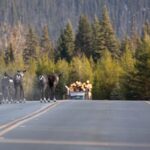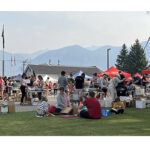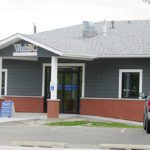Home »

Local fund helped seed Ecological Services project
Zehnder Ranch Ecological Services Project

The best land for wildlife is usually the best land for human settlement and activities.
Because of that, it is incumbent upon humankind to conduct itself in accordance with what is best for all ecosystems, including the human equation.
A Columbia Valley Rancher has been busy the past few years putting that into practice.
With seed funding from the Regional District of East Kootenay’s (RDEK) Columbia Valley Local Conservation Fund (CVLCF), David Zehnder of Zehnder Ranch, west of Invermere, has created a demonstration site that is quickly proving the benefits of using working land with a steady eye on the best use of that land for the betterment of all.
At the core of this work, called the Ecological Services Initiative (ESI), which has now expanded to 30 demo sites across B.C. and Alberta, is financial incentive.
Essentially, if farmers or ranchers take steps to help produce clean air and water and improve/maintain wildlife habitat on their working landscape, they will receive monetary benefits.
“It’s a whole new lens and a way of thinking about it,” Zehnder said.
By providing incentives to farmers or ranchers for altering their approach to land use that ensures preservation of land and protection of water sources from pollutants, conservation groups and local governments can do a more thorough job.
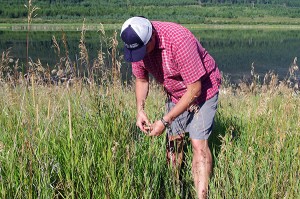
And that would mean decreased costs to taxpayers in the long run, Zehnder suggests, outlining New York City as an example.
Rather than construct an $8 billion water purification plant, with a $250 million annual operating cost, city leaders opted instead to head upstream with $1.5 billion in compensation for farmers to begin protecting the water sources on their land, as well as set aside more sensitive lands, such as riparian areas, from the working land-base.
“It costs much more to fix than preserve. Pay before it is broken,” Zehnder says, adding that all municipalities wrestle with rising water infrastructure costs, often in the purification arena.
It wouldn’t be necessary if upstream landowners, from individuals to corporations, went about their business with an eye on not harming others’ downstream.
The ESI works by landowners signing an agreement and taking steps to improve their land and water use and if improvements can be verified, the landowner receives financial incentives.
Zehnder’s demonstration site is at Bunyan Lake (pictured above), where cattle have traditionally come to water and keep cool. With funds from the RDEK’s Local Conservation Fund, managed in partnership with the Kootenay Conservation Program (KCP), he fenced a large area around the east side of the lake, halting access for cattle.

After three years, the riparian area (waterside land) in the fenced site has bounced back, with saplings growing, native plant species returning an increased wildlife activity.
“We wanted to make sure that with the dollars being spent that there is a result,” Zehnder said, while showing CVLCF representatives the demo site in mid-August.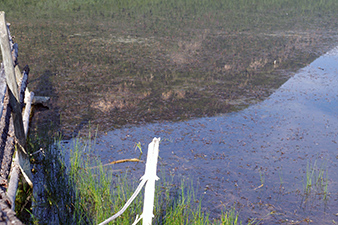
Indeed, on one side of a fence line stretching into the lake, there is deep, pitted mud and visible signs of disturbance in the water. The riparian area is mostly devoid of vegetation but on the other side of the fence – simply as close as that – the water is clear of debris and the riparian area is thriving with renewed life.

The Lake Windermere Ambassadors, also funded by the CVLCF, conducted water testing at the demo site. With cattle accessing Bunyan Lake, the turbidity of the water was 27.3 Nephelometric Turbidity Units (NTUs), with 6,000 colonies of E.coli. Post cattle, two tests revealed 1.06 and 1.94 NTUs and one and nine E.coli colonies.
“It’s very encouraging that we were able to show an economic benefit as well as an ecological one,” Zehnder said. “It’s been hugely successful. We are drawing in global experts because we don’t want it to be based on bad science. We are doing the diligence.”
Thanks to seed funding from the CVLCF, his demonstration site has served as a successful example, spawning 29 more demo sites in B.C. and Alberta, with other funds leveraged, interest from seven universities and full endorsement from the B.C. Cattlemen’s Association and the BC Agriculture Council.
Kootenay Conservation Program Manager Dave Hillary noted the Zehnder Ranch project has been a great success “because it is producer-led. That is meaningful.”
Funds spent on Zehnder’s demo site have also benefitted local workers, Zehnder said. “It brought a lot of money into the region.”
Along with his ranch site, there is one near Cranbrook and another at Jaffray and more are expected to come on line.
“The potential is endless,” said Zehnder, pointing at Switzerland as an example of how ecosystem services projects work, with a program in place the past 14 years.
“They say it is straight forward. If it wasn’t for it they wouldn’t exist,” he said, adding he’d like to see the program become regional in scope.
Hillary agrees. “It really does make sense to see it regionally. But right now we (CVLCF) can only spend money between Spillimacheen and Canal Flats.”
The CVLCF operates on a Regional District of East Kootenay collected fund.
Submitted

